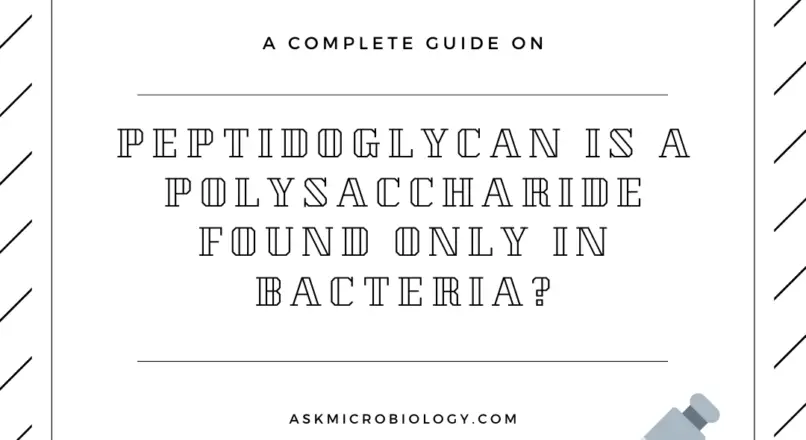
Is Peptidoglycan a polysaccharide found only in bacteria?
Peptidoglycan is the monomeric form of carbohydrate that is found in bacteria only. This peptidoglycan is the polymers of sugar and amino acids. The sugar N-acetylglucosamine and N- acetylmuramic acid linked with the amino acids. Three to five peptide chains linked the sugar and protein together. These polymers combine to give the structure of bacterial cell wall.
Classification according to peptidoglycan:
Peptidoglycan is responsible for the classification of bacteria. The bacteria are classified into two groups.
- Grams positive bacteria
- Gram-negative bacteria
Grams positive bacteria:
Gram-positive bacteria have a high content of peptidoglycan. Crystal violet binds with the peptidoglycan and gives dark purple color to the bacteria. This binding is not washed by alcohol and thus observes purple under a microscope.
Grams negative bacteria:
Gram-negative bacteria have low content of peptidoglycan. Crystal violet binds with the peptidoglycan. This binding is washed by alcohol and thus retains the secondary dye color. It observes pink under the microscope.
Biosynthesis:
It is present in cell wall as crystal lattice form. Two amino sugar chains are present which is called N-acetylglucosamine (NAG) and N-acetylmuramic acid (NAM). These NAM and NAG units are linked with the three to five linker peptides. These units are cross-linked with the amino acids residues. These amino acids are oligopeptides. Peptidoglycan monomers are present in the cytosol. Bactoprenol transport the monomers to the cell wall and prepare the cell wall.
Inhibition:
The synthesis of peptidoglycan is inhibited in various ways;
- The monomers synthesis is blocked by using antibiotics. If the monomers are not synthesized, the cell wall is not prepared and synthesized properly.
- The linker peptide can also be inhibited. If linker peptide is inhibited, the monomers are not linked and the cell wall is not synthesized.
- If the monomers are present in cytosol, the joining peptide that binds the monomers can be blocked.
- The linker peptide can be altered by using identical precursor. These precursor unable the cell wall to bind and form cell wall.
- Bactoprenol that transport the monomers is blocked by using antibiotics. The transportation blocked and then cell wall synthesis is blocked.
Antibiotics that affect peptidoglycan:
| Antibiotics | Mode of action |
| Bacitracin | Inhibit Bactoprenol |
| vancomycin | Attach with a linker peptide |
| lysozyme | Breaks the bonds |
Leave a reply